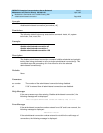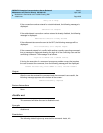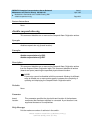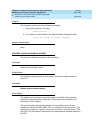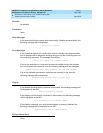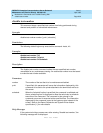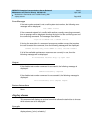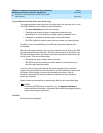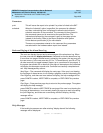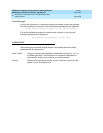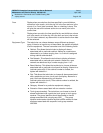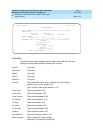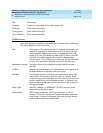
DEFINITY Enterprise Communications Server Release 5
Maintenance and Test for R5vs/si
555-230-123
Issue 1
April 1997
Maintenance Commands and Trouble-Clearing Aids
Page 8-96display alarms
8
Permissions
The following default logins may execute this command: system technician,
inads, cust, rcust, bcms, init, browse.
Examples
display alarms
display alarms print
display alarms schedule
Description
The display alarms command brings up a hardware alarm report. This screen
allows the technician various different options to select which alarms will be
displayed on the alarm report. There are no parameters entered on the command
line, parameters are selected on the hardware alarm report form instead.
An alarm can occur for any hardware object when it has been determined by the
maintenance subsystem that a problem definitely exists. The impact of the
problem is indicated by the alarm type:
Warning alarm
—A problem which has been deemed important enough to log, or
may be external to the system, but not severe enough to cause a noticeable
degradation of service.
Minor alarm
—A problem which could disable a local area of the system and so
noticeably degrade the system.
Major alarm
—A problem which widely degrades the system and seriously
impairs service. This would cause a call to be placed to INADS.
A resolved alarm is a problem which has been corrected, and the alarmed
component of the system is functioning correctly again. The alarm will be
stamped with a resolved date and time, indicating that it is no longer a concern
(any errors associated with the alarms will also be considered "resolved").



